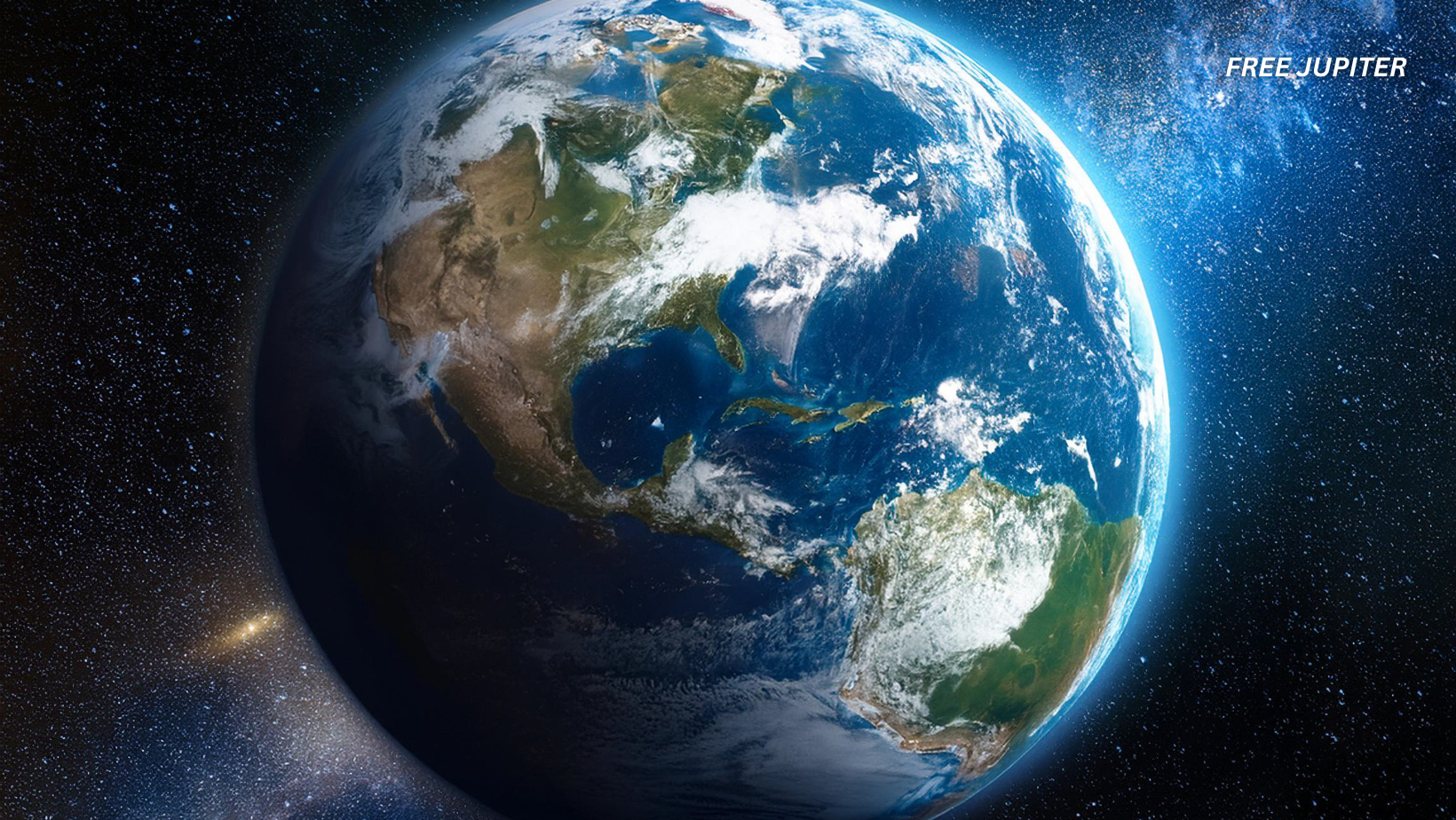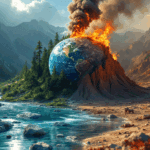Imagine looking up at the night sky and seeing glowing curtains of color — not just in the Arctic or Antarctica, but everywhere, even over the tropics. It sounds beautiful, but for humans living 41,000 years ago, this wasn’t just a light show. It was a warning sign that something strange was happening to the planet.
At that time, Earth’s magnetic field — the invisible shield that protects us from dangerous solar radiation — nearly collapsed. Scientists call this dramatic episode the Laschamps Excursion, named after volcanic rocks in France where traces of the event were first discovered. And while it didn’t flip the planet’s poles entirely, the field weakened so much that it left ancient humans exposed to higher levels of harmful radiation.
This wasn’t just a cosmic curiosity. It changed the way people lived, forcing them to adapt in surprisingly clever ways.
When Earth’s Magnetic Umbrella Failed
Normally, our planet behaves like a giant bar magnet, with north and south poles acting as anchors for an invisible protective bubble known as the magnetosphere. This shield blocks most of the solar wind and ultraviolet (UV) radiation that would otherwise fry our atmosphere — and us.
But around 41,000 years ago, that stability faltered. Instead of staying in neat north-south alignment, Earth’s poles wandered chaotically across thousands of miles. At the same time, the field’s strength dropped to less than 10% of today’s level.
For people alive back then, this had two major consequences:
- The skies looked bizarre — Auroras (northern and southern lights) weren’t limited to polar regions. They likely lit up skies over Europe, Africa, and even near the equator.
- The Sun got more dangerous — With a weaker magnetic shield, more UV rays and charged particles made it to the surface. This meant greater risks of skin damage, eye problems, birth defects, and other health issues.
In short, the world suddenly became both dazzling and deadly.
How Humans Responded
Here’s where it gets fascinating: humans didn’t just sit around and get burned. They adapted, and archaeology gives us clues about how.
- Seeking Shelter: People spent more time in caves, which weren’t just cozy spots but effective radiation shelters. This could also explain why so many Paleolithic cave paintings — like those at Chauvet or Lascaux in France — emerged around this era. Was it pure art, or partly a way of passing the time indoors?
- Tailored Clothing: Archaeological evidence suggests people were already making fitted clothing, but during this period, clothing became even more practical. Covering up meant better protection against both cold weather and UV exposure.
- The Original Sunscreen: Perhaps most intriguingly, ochre — a red or yellow mineral pigment — was smeared on skin. While it was certainly symbolic and artistic, researchers suspect it also worked like sunscreen, blocking some of the harmful UV rays. Imagine prehistoric SPF 10, straight from the earth.
Notably, these behaviors weren’t uniform. Different groups — like Homo sapiens and Neanderthals, who both lived in Europe at the time — may have responded in distinct ways. Some leaned more heavily on cultural tools (like clothing and pigments), while others relied on natural shelters.
A Cosmic Event With Earthly Consequences
It’s tempting to wonder whether this radiation spike and environmental stress contributed to big human milestones. Did the Laschamps Excursion push people to innovate faster? Was it one of the pressures that eventually tipped the balance against Neanderthals, who disappeared not long after?
The truth is more complicated. Scientists emphasize that this wasn’t a single “doomsday event” that wiped out populations. Instead, it was one piece of a bigger puzzle that included climate change, competition for resources, and shifting ecosystems.
Still, space weather likely played a hidden role in nudging human creativity, resilience, and survival strategies.
Space Weather: More Than Just Science Fiction
When we hear “space weather” today, we usually think of solar flares messing with satellites or astronauts needing extra protection. But the Laschamps Excursion reminds us that space weather has always been part of Earth’s story — even shaping human history.
For modern scientists, studying this event means blending two very different worlds:
- Geophysics, which looks at how Earth’s magnetic field interacts with solar activity.
- Archaeology, which studies how people adapted to their environments.
Together, they offer a rare glimpse of how cosmic phenomena ripple down to ground level, shaping not just rocks and data points, but human lives.
Could It Happen Again?
Here’s the kicker: the Laschamps Excursion wasn’t a one-time fluke. Earth’s magnetic field has reversed or weakened multiple times throughout history, and it will almost certainly do so again.
Right now, scientists have noticed that the magnetic field has been weakening over the last few centuries. There’s even a mysterious region over the South Atlantic, where the field is unusually weak — a potential seed for a future disruption.
If another Laschamps-like event happened today, the impacts would be very different:
- Our technology would be at risk. Satellites, power grids, and GPS systems could fail under intense radiation.
- Air travel and space missions would become more hazardous.
- The radiation risk for people on the surface, however, would be less dire thanks to medical knowledge, protective materials, and indoor lifestyles.
In other words, the sky might still dazzle us, but the real danger would be technological chaos rather than survival-level threats.
Related Threads in Human History
The Laschamps Excursion isn’t the only moment when cosmic forces shaped humanity. A few other episodes worth noting:
- The Younger Dryas (about 12,900 years ago): A sudden cooling event, possibly triggered by a comet impact or shifts in ocean circulation, drastically altered human migration and farming patterns.
- Carrington Event (1859): The most powerful solar storm in recorded history caused telegraph wires to spark and catch fire. If such an event happened today, it could cripple modern infrastructure.
- Indigenous Sky Knowledge: Many ancient cultures left behind myths and stories about strange lights in the sky. Could some of these tales be echoes of past auroras or cosmic disruptions? It’s possible.
These threads remind us that space and Earth are deeply intertwined — and humans have always been caught in the middle.
A Bridge Between Earth and Space
What’s most inspiring about this research isn’t just the science itself, but the collaboration behind it. Archaeologists and geophysicists don’t usually work together, yet in studying the Laschamps Excursion, they bridged their fields.
For archaeologists, it meant treating space weather as part of the environment that shaped human choices. For geophysicists, it meant seeing how data and models connect to lived experiences.
And for the rest of us, it’s a reminder that humanity’s story isn’t just written in stone tools and bones, but also in the invisible forces of the cosmos.
42,000 Years Ago, Strange Things Started Happening On Earth
Read more: Birds Can Actually See Earth’s Magnetic Field—Thanks to Quantum Physics
Final Thought
Forty-one thousand years ago, humans looked up and saw the sky shimmering with strange lights. Some sought shelter, some wrapped themselves in clothing, and some painted their skin with ochre. They didn’t know it, but they were adapting to a cosmic drama far beyond their control.
In a way, their story is our story too. We still live under the same magnetic shield, still vulnerable to its quirks, still adjusting to the moods of the Sun. The difference is that now, we understand a little more about what’s going on — and we can prepare for the next time the sky reminds us just how connected we are to space.
Featured image: Freepik.
Friendly Note: FreeJupiter.com shares general information for curious minds. Please fact-check all claims and double-check health info with a qualified professional. 🌱










